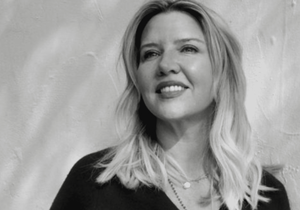What is Attachment Theory?
Learn about Attachment Theory and Styles
Our childhood and upbringing impact the ways in which we create bonds, process conflict and approach resolution. Exposure to chaos, conflict communication styles and the type of affection one is shown throughout one's childhood can all shape one's behaviors as an adult.
These relationships that you have in your childhood create different kinds of bonds. These bonds directly influence the bonds you create in your adult relationships. This is known as attachment theory.
According to the book, “ Attachment Behavior in Children” by Jude Cassidy, “Attachment theory is a psychological, evolutionary and ethological theory concerning relationships between humans.”
Attachment at its Core
Attachment is defined as a “lasting psychological connectedness between human beings.” Scientist and attachment theorist John Bowlby believes that the first attachments made between a baby and their primary caregiver greatly influence future relationships. These attachments were proven to boost the survival rates of children as well - when a child was brought up close to their primary caregiver and presented with love and affection, they were more likely to survive to adulthood.
Different attachment styles in adulthood are birthed from how present your primary caregiver was in your childhood.
Stages of Attachment
“As an infant develops, the earliest bond with his primary caregivers becomes the template for his sense of self and sense of other. When a child’s relationship with his primary caregivers is traumatic, his capacity to connect and bond with others is injured, and his ability to regulate emotions and tolerate stress may become compromised.”- Thomas Hubel
Attachment Styles
Depending on your upbringing, there are different attachment styles that you may fall into when it comes to relationships in your adult life.
- This attachment style can also be specified as dismissive-avoidant or anxious-avoidant. This attachment style is an insecure style of attachment.
It is defined primarily by failed long-term relationship building due to inability to engage in physical or emotional intimacy.
Some developmental signs of avoidant attachment might include:
~ Your caregiver leaving you to fend for yourself
~ Expectations of total independence
~ Being reprimanded when you did depend on a caregiver
~ Rejection when trying to express your emotions
~ Caregivers being slow to respond to basic personal needs
There are signs that might help indicate that you have an avoidant attachment style. These include:
~ Persistently avoiding physical or emotional intimacy & discomfort expressing your emotions
~ Trust issues
~ Feeling threatened by anyone who tries to get close to you
~ Believing you don’t need anyone in your life and having a strong sense of independence
In a relationship, this may look like creating distance with your partner or friend, potentially including an avoidance of emotional closeness and lack of trust.
This attachment style can be called anxious-ambivalent or anxious-occupied attachment. This is another form of insecure attachment. Some developments that may show that you have an anxious-ambivalent attachment style include:
~ Parents may have alternated between coddling and detachment
~ Being held responsible for how your parent felt
~ Being overwhelmed easily
Some indications that this may be your relational attachment style could include:
~ Clinginess
~ Highly sensitive to criticism - the need for approval
~ Jealous tendencies - fear of rejection
~ Low self-esteem & overall unworthiness
~ Significant fear of abandonment
~ Difficulty with trust
In a relationship, this could look like a need for constant reassurance of worthiness and love from their partner, as well as jealousy and blame for conflict.
This third attachment style is also known as anxious-disorganized attachment. It is best defined as having extremely inconsistent behavior and difficulty trusting others. Developments for this attachment style typically revolve around childhood trauma, abuse, or neglect.
Typically these children fear their parents, and seem to be inherently confused by many things.
Some indications you can look for if you have this attachment style are:
~ Fear of rejection
~ High levels of anxiety
~ Inability to regulate emotions or behavior
~ Trust difficulties
It should be noted that this particular attachment style can also lend itself to developments of certain mental health disorders:
- Mood disorders
- Personality disorders
- Self-harm
- Substance abuse
Please make sure to look out for yourself and your well being always.
In a relationship, this attachment style may look extremely unpredictable with typically erratic behavior. People who exhibit this attachment style tend to be clingy and emotional.
Wrapping Up
The attachment theory lends itself to how your past influences your adult relationships. According to The Society for Psycho Therapy, attachment theory can be used to understand the development of coping patterns or relationship patterns and the underlying dynamics of a person's emotional difficulties. Identifying which attachment style applies to you can be helpful as a tool to understand coping mechanisms your inner child may have developed.
Thomas Hubel states that, “A healthy attachment process between parent and child allows for the formation of healthy consciousness structures, so that the child may develop and flourish. Inconsistent, neglectful, or abusive parenting often gravely damages interior and even exterior development.
Healing permits us to travel lighter and brighter, to be more fully and deeply present to the moment, as less of the past splits our energy and attention and weighs us down. We begin to feel a sense of deeper presence, of “here-ness,” and to see and sense our world with greater clarity and precision.”
*This post does not provide medical advice. It is intended for informational purposes only. It is not a substitute for professional medical advice, diagnosis or treatment.*






















